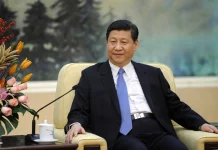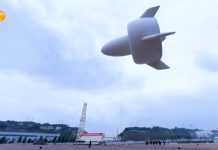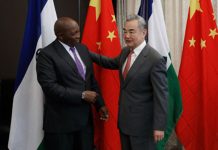-Says Chinese MAT capable to meet warfare challenges
By Ajmal
Khan Yousafzai
ISLAMABAD: Chief of the Air Staff, Pakistan Air Force (PAF) Air Chief Marshal Mujhahid Anwar Khan Tuesday said Chinese Military Aviation Technology (MAT) was at par with contemporary requirements and had full capacity to meet the challenges of modern warfare.
He was expressing his views after flying an air superiority sortie in a Hi-Tech Chinese fighter aircraft during ongoing exercise Shaheen IX, said a PAF press release. Lauding the professionalism of Peoples Liberation Army Air Force (PLAAF) pilots, the Air Chief said the outstanding air combat skills of PLAAF pilots are reflective of robust and modern combat training program of PLAAF.
Expressing his satisfaction over the conduct of the exercise, the Air Chief said that it was heartening to see the two Air Forces inter-operating across a wide spectrum of airpower employment options.
He also said that in modern times competition in the air domain centers not only around mastery of technology, but also on its artful application in both strategy and tactics.
He added that Shaheen series of exercises will go a long way in enhancing the professional skills and operational preparedness of both the Air Forces in addition to developing mutual understanding of each other’s combat skills and promoting inter-operability.
It is pertinent to mention that the joint Air Exercise Shaheen IX that commenced on Dec 09, 2020 has now entered its last phase.
Earlier Monday, a Chinese foreign ministry spokesperson said the ongoing joint air force exercise between China and Pakistan was a routine drill and it was not targeting any third country.
“The relevant cooperation is a routine arrangement between the two militaries. It is not targeting any third party,” Wang Wenbin said during his regular briefing held here.
China and Pakistan are holding the joint air force training dubbed “Shaheen-IX,” which will continue until the end of December. This is the ninth time the air forces of the two countries have held “Shaheen” joint training.
The first “Shaheen” joint training was in March 2011 in Pakistan. The last time was held in Northwest China in August 2019 and lasted for half a month. The training in 2019 involved some 50 aircraft, the most personnel and the most complete combat units.
To question that the month long exercise was seen by Indian experts as a larger strategic posture and matter of concerns for India, he said, “As all weather strategic cooperation partners, China and Pakistan have friendly exchanges and cooperation in many areas including politics, economy, military, and security.”
He hoped that the relevant party could view the exercise being conducted in Pakistan, in an objective manner and said, “We are committed to jointly upholding regional peace and stability.”
According to Chinese defense ministry, the joint training, which is one part of the China-Pakistan military cooperation plan in 2020, will play a positive role in promoting the development of military relations, deepening practical cooperation between the air forces of the two countries and improving the actual combat training level of the two forces.
Commenting on the exercise, the Chinese experts said the joint air force training between the two countries amid the COVID-19 pandemic showed the profound friendship between China and Pakistan, which is conducive to improving the comprehensive combat capability of the two militaries.
Fu Qianshao, a Chinese military aviation expert told the Chinese media that although the timing of the joint air force training this year is later than previous years, the fact that it was held as usual shows the deep friendship between China and Pakistan and the importance the two countries attach to military exchanges.
The China-Pakistan “Shaheen” joint training saga has been conducted on a regular basis and rotated in China and Pakistan.
Fu believes that through years of exchanges the two militaries can learn a lot, especially in the field of actual combat training, which is conducive to improving the comprehensive combat capability of the two militaries.
The confrontations between India-Pakistan and China-India will not affect the normal military exchanges between China and Pakistan, said Fu.
India’s frequent military exercises with other countries have given it little reason to question normal military exchanges among other countries, said Fu.





